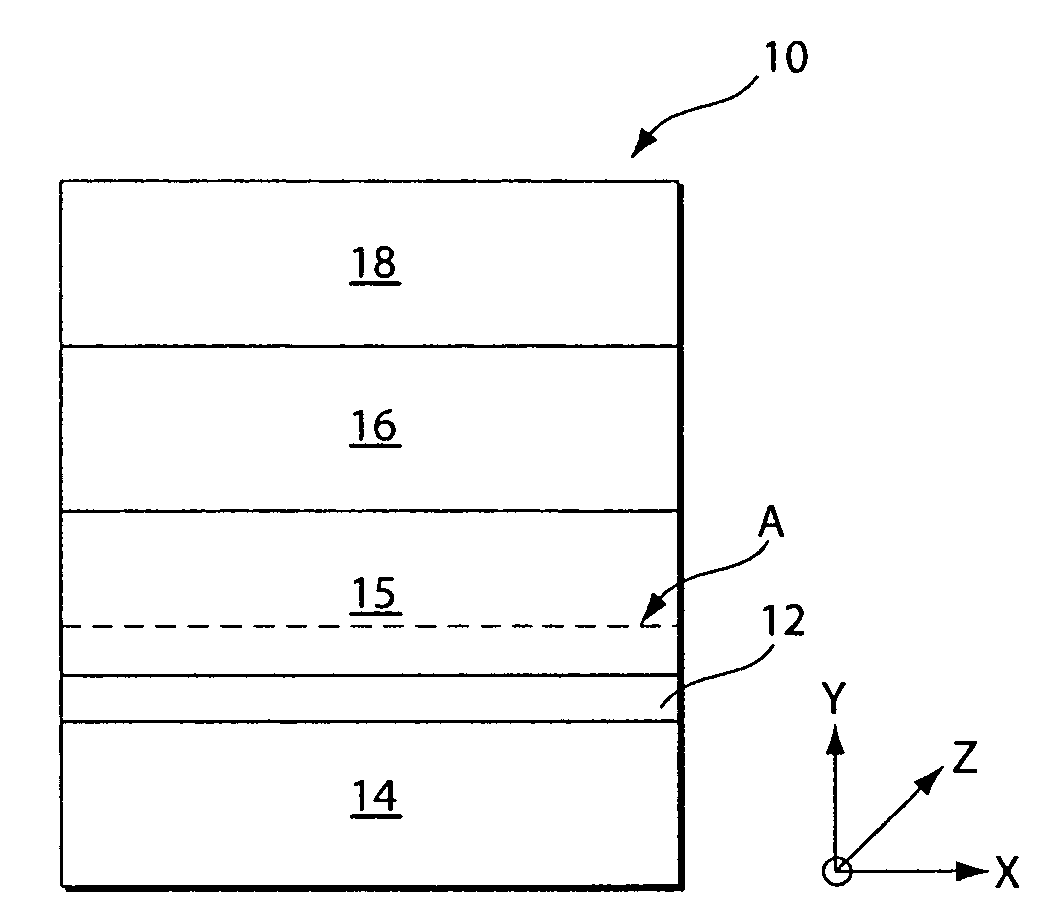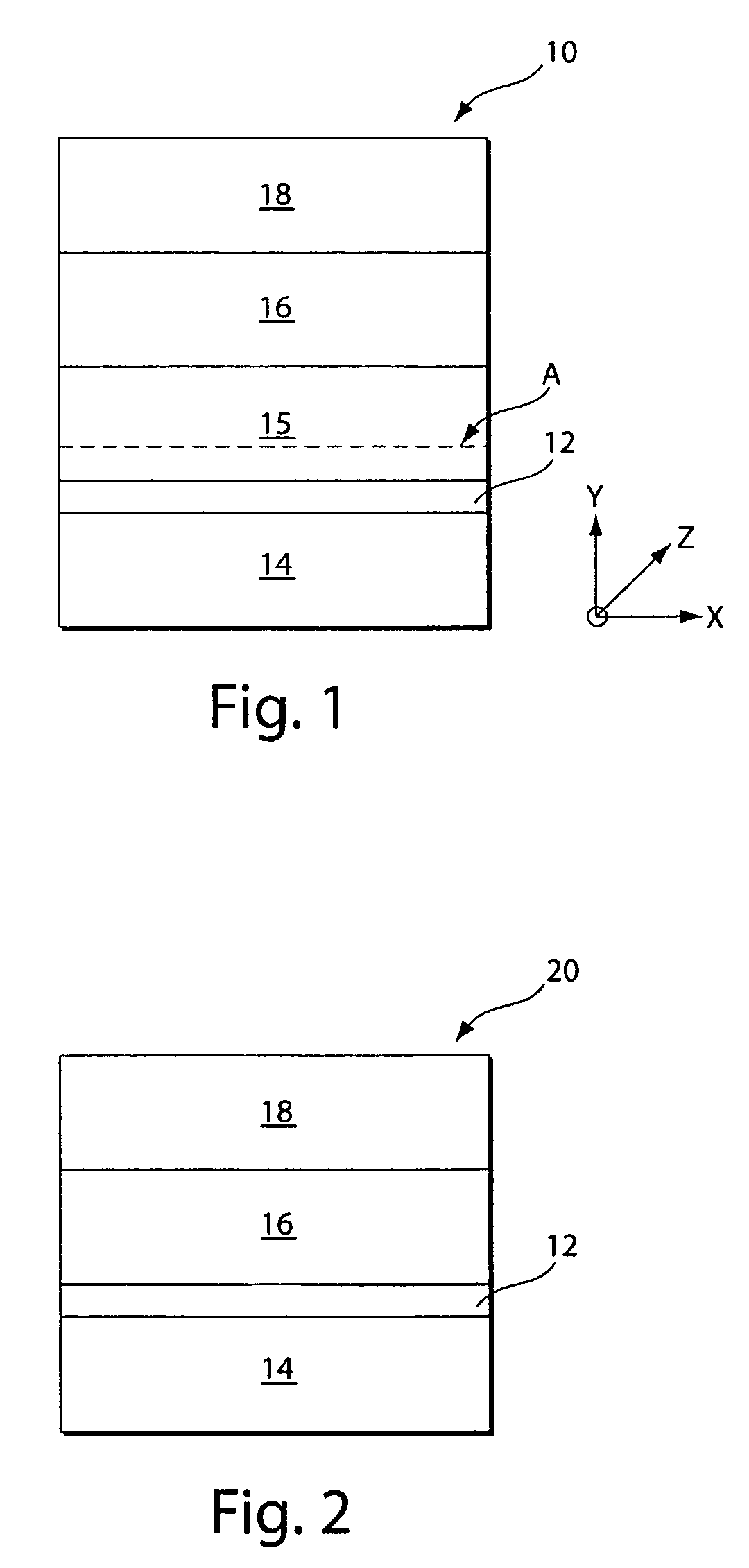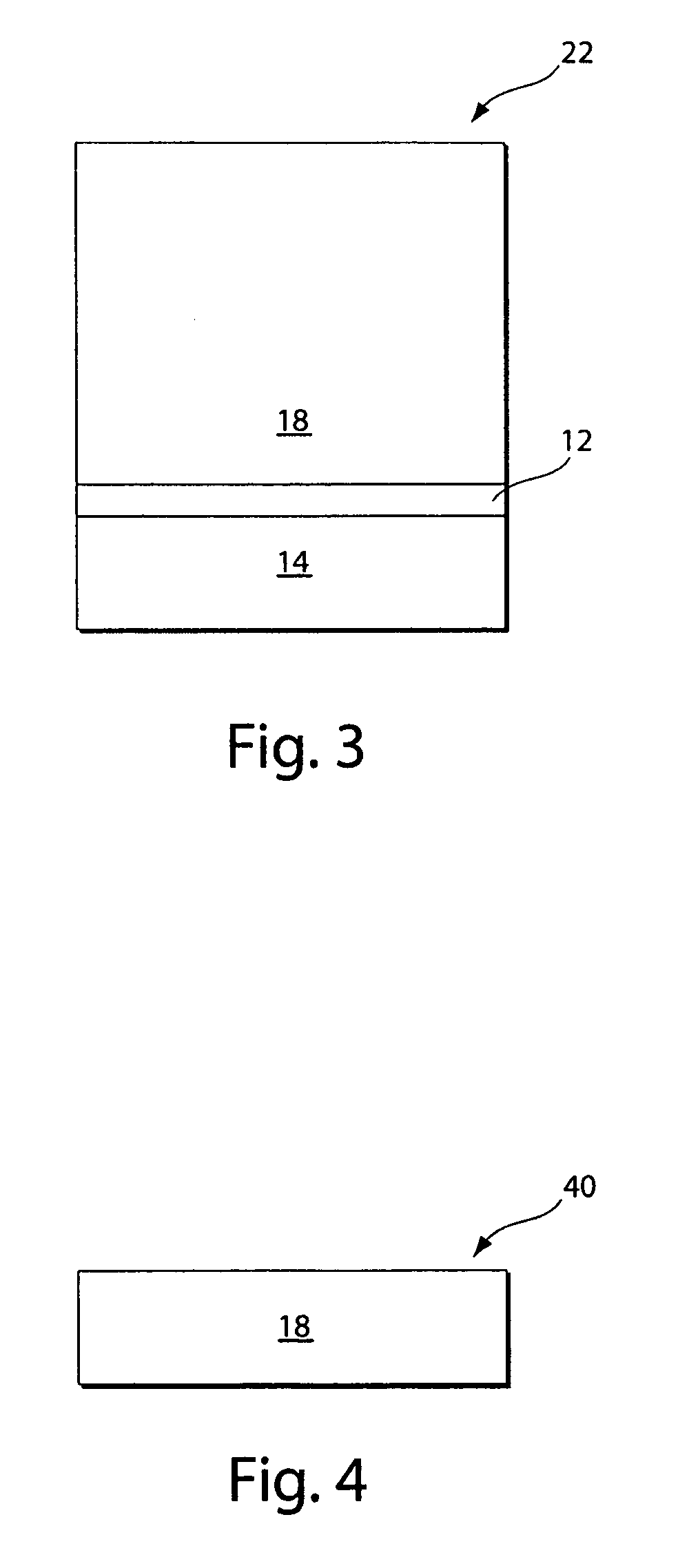III-nitride materials including low dislocation densities and methods associated with the same
a technology of nitride and dislocation density, which is applied in the direction of polycrystalline material growth, crystal growth process, chemically reactive gas growth, etc., can solve the problems of device performance, electrical performance, and dislocation formation of defects,
- Summary
- Abstract
- Description
- Claims
- Application Information
AI Technical Summary
Benefits of technology
Problems solved by technology
Method used
Image
Examples
example 1
[0123]This example illustrates the formation of a structure including III-nitride material layers / regions having low screw dislocation densities according to one embodiment of the present invention.
[0124]A 100 mm silicon substrate was placed in a reaction chamber. Ammonia gas was introduced into the chamber as a nitrogen source. The temperature was maintained at 1030° C. and the pressure at about 30 torr. A strain-absorbing layer of amorphous silicon nitride (SiN) was formed.
[0125]About 6 seconds after the introduction of ammonia, TMA was introduced into the chamber as an aluminum source. The temperature and pressure were respectively maintained at 1030° C. and about 30 torr. Growth proceeded for about 60 minutes. An aluminum nitride (AlN) was formed.
[0126]After about 60 minutes, TMG was introduced into the chamber. Growth proceeded for about 40 minutes. An aluminum gallium nitride layer (Al0.6Ga0.4N) was formed.
[0127]After about 40 minutes, the concentration of TMG being introduced...
PUM
| Property | Measurement | Unit |
|---|---|---|
| thickness | aaaaa | aaaaa |
| area | aaaaa | aaaaa |
| thickness | aaaaa | aaaaa |
Abstract
Description
Claims
Application Information
 Login to View More
Login to View More - R&D
- Intellectual Property
- Life Sciences
- Materials
- Tech Scout
- Unparalleled Data Quality
- Higher Quality Content
- 60% Fewer Hallucinations
Browse by: Latest US Patents, China's latest patents, Technical Efficacy Thesaurus, Application Domain, Technology Topic, Popular Technical Reports.
© 2025 PatSnap. All rights reserved.Legal|Privacy policy|Modern Slavery Act Transparency Statement|Sitemap|About US| Contact US: help@patsnap.com



